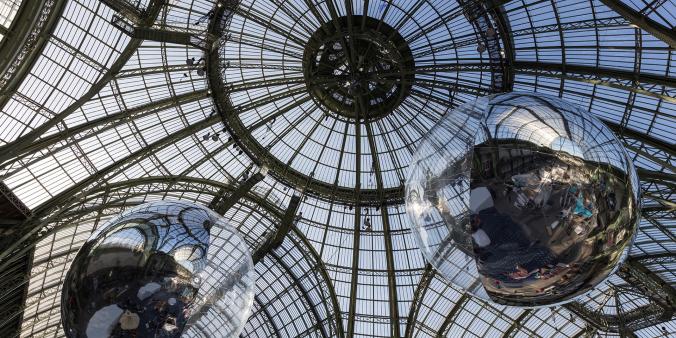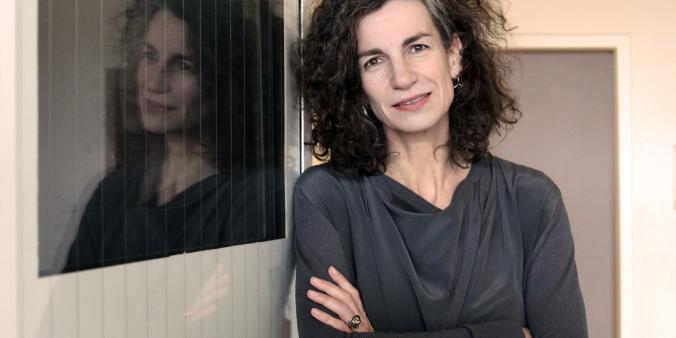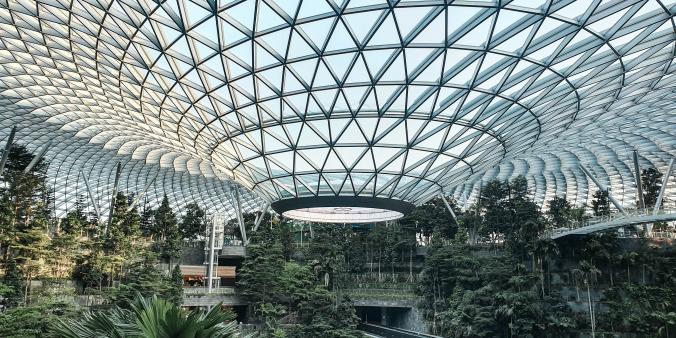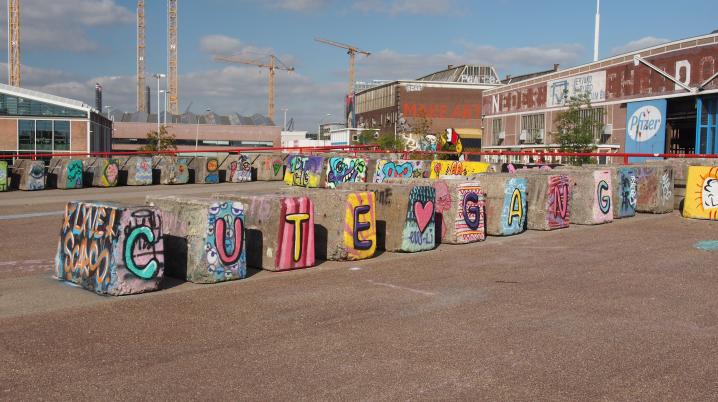
Maarten Doorman on Translocality in the Arts
What does it mean to work internationally as an artist anno 2020? Are the traditional categories, such as ‘international’ and ‘cosmopolitan’, still sufficient to both describe the ambitions of artists and cultural workers, and address the challenges of working in a globalised world? In order to reflect on the conditions and effects of cultural collaboration, DutchCulture explores in a series of colloquia relevant new research in the field of cultural internationalisation.
On April 30, DutchCulture organised the first in this series, a colloquium on tranlocality in the arts, during which prof. dr. Maarten Doorman (Maastricht University / VU Amsterdam) gave the following keynote speech on how the arts can be both globally oriented and locally embedded.
Translocality and the Coronavirus
DutchCulture’s programme for March 2020 included a symposium on translocality in the arts. However, given all the measures relating to the progressive corona outbreak, it soon became clear that this symposium had to be cancelled. This also caused the organisers, and me included, to wonder whether it was at all suitable to conduct this debate at a time when not just the arts but our entire culture was being shaken to the core. Do we not have bigger things to worry about just now? Would it not be perverse to devote our time and attention to exploring a notion like translocality?
I don’t think so. For the position and the developments in the arts of the early 21st century might actually tell us something about how people worldwide are tackling coronavirus; while, conversely, the current events could help us gain a better understanding of the art world. We have seen the virus rapidly spread around the world to become a truly global phenomenon. At the same time, the response to this worldwide plague has barely been coordinated at that level. Rather surprisingly, the efforts of health care and politics to tackle the disease have mainly been conducted at the national level. As Frank Snowden, medical historian at Yale University, recently pointed out: “It is an illusion that national borders mean anything at all in a globalised medical environment” (Volkskrant, April 17). Whereas outbreaks in Europe were primarily local (parts of Lombardy, the Dutch province of Brabant, or the German municipality of Gangelt just across the Dutch border), the response was mainly framed within a national context. In the current situation of grave anxiety and gut reactions, the national dimension turns out to be much more important than previously assumed. Compare this, for example, to the WHO’s current weakness and lack of authority, and the absence of any medical-social policy by the EU, and their highly inadequate and problematic monetary reactions. Of course we can also point to exceptions such as Germany’s decentral approach, in which the federal states pursue a more autonomous course. But all in all it’s fair to say that the phenomenon of the crisis was both local and global, while the response has been a national one.
The notion of translocality is a critical concept that questions the notion of the national, and consequently also of the inter-national, which after all refers to the collaboration and exchange that nation-based entities engage in. Research by epidemiologists, virologists and other medical professionals is organised at a global level but not internationally (although it is often referred to that way), and is embedded in both local scientific practices (laboratories, scientific institutes) and global practices, e.g. journals and online platforms. The financing of these efforts is mainly organised at the national level, however. And it is precisely in this discrepancy between national structures and non-national, translocal phenomena that we see a striking and, with a view to today, important parallel with the world of the arts.
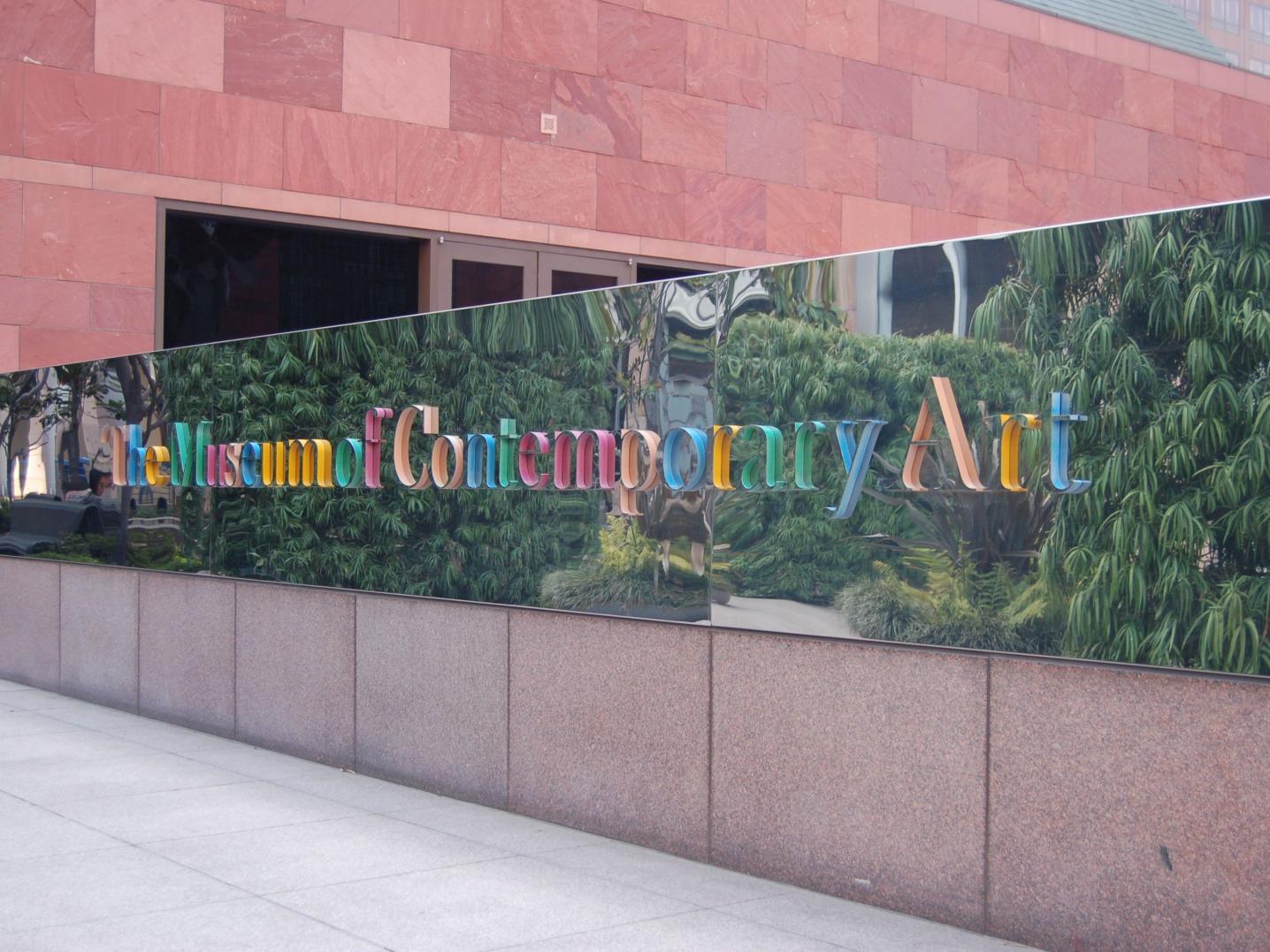
A European in Los Angeles
This parallel phenomenon was the subject of an essay I wrote last year at the invitation of Nieuw Dakota, which you can find on the internet and of which I shall make extensive use now. It starts with my visit to Los Angeles two years ago, where a combination of European prejudice and personal curiosity prompted me to stroll around downtown to visit a series of nearby museums. Just going around the centre of town (if LA can even be said to have a centre) on foot is rather unusual, however, since everyone only moves around in cars. Aside from lots of homeless people and one or two other disoriented tourists, I did not encounter a soul. But I did find seven museums within a two-kilometre block, and I visited each one.
That sounds like more than it turned out to be, however. In Olvera Street, a tourist lane lined with market stalls, I visited the city’s oldest house, the Avila Adobe; not a very remarkable building for a European. The United Methodist Museum of Social Justice consisted of one small room with a few works of art full of social indignation, such as a cartoon-like image of a capitalist in a red sleigh riding over poor land labourers. On the opposite side of the spectrum was the famous Museum of Contemporary Art (MOCA), with its annex just further along, The Geffen Contemporary. And then there was the Broad Collection, with works by superstars such as Roy Lichtenstein, Andy Warhol and Jeff Koons. Here it was necessary to queue for a ticket, but at the small Chinese American Museum, devoted to showing that people of Chinese descent make good Americans too, I was the only visitor. I was also a lone visitor in the equally small Japanese American National Museum, which admitted that the Japanese had bombed Pearl Harbor ‘out of the blue’, but that there were noble heroes among them, too.
Altogether it was a bit of a hodgepodge, with barely any role for art in the latter two museums, or in the Avila Adobe. Still, all these museums did represent an idea. They were there, not so much to display beautiful objects but to tell a story. And a story that was often embedded locally. Thus, as a historical site the Avila Adobe did contribute to the rather soulless identity of Los Angeles; the Museum of Social Justice tried, as a local community, to address inequality; the Broads sought to let others share in their staggering wealth by making their collection accessible for ‘the widest possible audience’. And the two small museums aimed to elicit empathy for the Chinese and Japanese minorities in the city. Only the Museum of Contemporary Art and its annex did not explicitly relate to their direct environment.
The Global World of Art
We are inclined to see museums or other spaces devoted to art as elaborate showcases (and theatres as pure entertainment), forgetting that such institutions have always existed in order to express a certain idea or aspiration. Europe’s major museums are no exception: they were created to demonstrate the greatness of the nation and to infuse that nation with a sense of identity, based on a romantic cultural-political ideal. See the Prado in Madrid, London’s National Gallery, or Amsterdam’s Rijksmuseum. But the same applies to the countless smaller museums that spent the past two hundred years collecting and displaying arts and artefacts, in an effort to furnish not just the national but often also the regional or city culture with an identity of its own.
In all these cases, what mattered was the relationship to a certain place: a country, a region, a city. This place was not just topographically defined, however, because what really mattered of course was the community of people living there. And as I walked around downtown LA, it struck me that this continued to apply for the museums and quasi-museums I visited there. The exceptions were the MOCA and its annex, and perhaps The Broad Collection, since those institutes were rooted in the cosmopolitan traditions of modernism and the international avant-garde. And the local is not of much interest in the cosmopolitan tradition.
Of course I saw many American artists there, but these are found just as well in Europe and elsewhere: Koons, Warhol, Rothko, Ellsworth Kelly. These artists are part of the ‘global world of art’ and are not exhibited there on account of their American origin. The first sentence of MOCA’s mission statement is: ‘We are contemporary.’ This is followed directly by the bold statement that the museum owns ‘one of the most compelling collections of contemporary art in the world.’ It’s about art from a worldwide perspective, ordered according to a global hierarchy as determined by prominent museums such as the MoMA and the MOCA itself, and by Centre Pompidou, MOCA Shanghai, the Tate Modern, and by the international art trade in cities like London, New York, Hong Kong, Basel, Miami, Dubai, Paris, Mexico City and New Delhi.
Treating the world of art as a kind of global Champions League, where the astronomical sums paid at auctions by the superrich have become the ultimate measure for what a work of art is worth, increasingly repels both artists and art lovers. And not just on account of the romantic notion that the value of art and of money are completely at odds with each other. It is also because this type of globalised art may well be termed contemporary, but that it is without any societal context, or cultural significance, or engagement with a specific audience, but simply floats around in the vain world of celebrities, media hypes, and speculative investment capital.

Local Counterreaction
Such trends were criticised previously, in the 1980s. It started with the punk rebellion against institutions and the market, with the ‘do it yourself’ generation. It also occurred outside the world of art, in the squatters’ movement, with freedom-minded youngsters determined to live a life outside mainstream society; either because society had no place for them, or they did not aspire to be part of bourgeois consumer society. It was a period in which various artists’ initiatives emerged, both in the Netherlands and elsewhere. Artists and theatre makers moved into vacant, often industrial buildings, where they created and presented work to the public with the least possible interference by the market and established institutions. These initiatives were often combined, legally or not, with cafés, alternative restaurants, dance halls and business ventures. Unlike today, these business ventures often had an ideological background, ranging from social legal support and yoga lessons to used clothing stores. Some artists outgrew this world and were absorbed into the traditional art circles and the market through galleries; others did not achieve this or did not aspire to.
Such artists’ initiatives emerged in many different countries, and they sometimes maintained active relations among each other; but it was a time before the internet and the social media. There was an international art world thanks to the market, but this market concentrated only on the traditional art circles. This would change toward the end of the 1990s due to an accelerating globalisation. Information exchange and human mobility were hugely boosted by the internet, a well-developed travel industry, and cheap kerosene.
Globalisation
When we look back on these developments now, we can recognise a growing split. On the one hand, the majority of artists who would never manage to connect to an art world in a hierarchically ordered, global perspective, and whose attempts to position themselves in an international world would only deliver frustration, no matter how good their work actually was. This included the local self-organising and self-sufficient artists’ initiatives that rarely if ever ventured beyond their own environment. And on the other hand we see global art, art in a worldwide economy of art fairs, large galleries, prominent museums, hugely wealthy collectors, and renowned auction houses such as Christie’s and Sotheby’s. This art was and is hierarchically ordered by the market: the higher the price, the better.
The tension between these two poles changed with the advent of the internet and the increasing movement of people across the globe. Now that everything is connected to everything, social networks span the world and cultures are increasingly blended together through migration, study and business travel, and through tourism and refugees flows, the dynamism between local and global art has changed as well. The notion of a centre is disappearing at the global level. Besides the ‘old’ Euro-American art centres, new centres are emerging in the Middle East, Asia and South America. Art historian and curator Jamila Adeli signals ‘an era of contemporary art that transcends not only territories and forms new central hubs, but initiates a paradigm shift towards a post-hegemonial, post-ethnic and post-Western notion of global art.’
Of course we cannot see into the future, so what this change will look like remains unclear. However, it does seem certain that what ‘art’ means globally is indeed subject to such a shift in values and perspectives. The western perspective on art is no longer a matter of course, and the notion of a single world-spanning hierarchy is fading.

Translocality
At the same time, all sorts of new and local art initiatives and networks started emerging around the globe from the late 1990s on. The question is how to position these developments within this new world, which is where the new notion of ‘translocality’ comes in. The translocal is embedded in the local (landscape or community, hence a place-based ‘thing’ or ‘person’), but the local only becomes significant within a global context, with the notion of the nation receding into the background. As a comparison, consider refugees from sub-Saharan Africa. Their point of departure is not a country but a village or a region, and their destination is not a country but is a safe place where they have contacts to help them survive. This place could be Europe, but it could just as well be another continent like North America or Australia; this does not matter to them, fundamentally. There is a place of origin and departure, and there will hopefully be a place of arrival where a better life awaits; the rest is space in between, and borders, corridors, blockades, problems, dangers.
It is essentially the same for global capitalism. Clothing is designed in Paris, exhibited in Milan, manufactured in Bangladesh, and worn in countless cities around the globe. Car parts are made in China and South Korea, are assembled in Germany, and the resulting car can be found on any continent. But what makes translocal art different is that it attempts to give meaning to the place where it is made and is exhibited. Translocal art tries to make these elements artistically productive by seeking to connect to landscape and community and in that sense completely opposite to global neoliberalism
In the aforementioned essay I discuss examples of Dutch art venues that are engaged in that attempt; for example Nieuw Dakota (Amsterdam), KiK (Kolderveen), A Tale of a Tub (Rotterdam), Kunstvereniging Diepenheim, the Translocal Institute for Contemporary Art (Budapest), the Neuer Aachener Kunstverein, Laboratoires d’Aubervilliers (Paris), 3331 Arts Chiyoda (Tokyo), and A4 (Chengdu). Ideally, the translocal is no longer found in the traditional cultural contexts described in policy documents or within the usual type of public funding framework; so it is no longer regional, provincial, municipal or national. Translocal initiatives are furthermore distinct from the artists’ initiatives from the 1980s and 90s in that the point is no longer or much more than the artists’ self-sufficiency. Those initiatives were often locally embedded from the start, for instance in squatted buildings and derelict industrial premises in neighbourhoods and regions, but the worldwide global community we know today did not exist at the time.
The local aspect refers to a connection with the location in a physical and social sense, on the one hand -- so with both the natural and urban environment (river, park, port or industry building, residential suburb) -- and to a connection with the people who live there, who work or once worked there, so with the history of the location, on the other. Put briefly: it’s about the connection with both the landscape and the community. The local should be seen as a connecting hub; it is not a centre and also does not position itself in relation to a centre, nor to the national. That is why the local character of translocal art venues has shed the association of being peripheral or pathetic, as implied in denigrating descriptions like ‘provincial’. The translocal has emancipated the local and has undermined the notion of a leading centre, or a number of leading centres surrounded by what is then considered peripheral by definition.
The translocal is global and operates in our mediatised world without the associated homogenisation seen in clothing (the ripped jeans) or in food (the hamburger) or in technology (the iPhone). Within the global context, the translocal is aware of worldwide mobility as manifested in large-scale migration and the increasing diversity as a result. This diversity is the starting point, a source of inspiration, and a source of material for translocality in art. This approach sees the rich polyphony of a colonial past, a local history, and the stories of new migrants from across the world as fertile ground for artists.
To conclude: a bridge between nowhere and everywhere
The dazed tourist in downtown Los Angeles is just as global as the local homeless people. The tourist is everywhere, the homeless are nowhere. Just as the art of the MOCA and the Broad Collection is everywhere, while the art in the Museum of Social Justice goes unseen and unheard, and hence is nowhere. Can art in a translocal perspective bridge that gap? Can we imagine a world in which migration, global changes and local roots co-exist, untroubled by once-upon-a-time borders and now-obsolete hierarchies? I believe that this is what art in a translocal perspective is after; a quest that is all about the critical and political interrogation of national borders, their disappearance and new articulations of those borders. It is a development that goes hand in hand with the changing position and role of the arts, in many concrete places worldwide.
Maarten Doorman is a writer, a philosophy lecturer at Maastricht University, and Endowed Professor of Historical Culture of Germany at the Vrije Universiteit, Amsterdam. Some of his relevant books are Progress in Art (2003), De romantische orde (2004), De navel van Daphne. Over kunst en engagement (2016) and Dichtbij en ver weg. Opstellen over Kunst, filosofie en literatuur (2018).
Much of this lecture is based on an essay Doorman wrote for Nieuw Dakota.
The next colloquium will take place June 24, featuring Ginna Brock on cosmopolitanism in the arts. A link to the event will be provided shortly.

